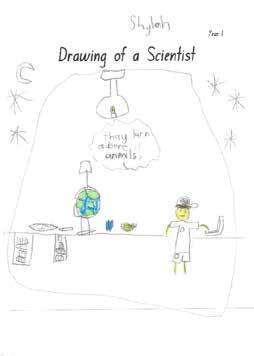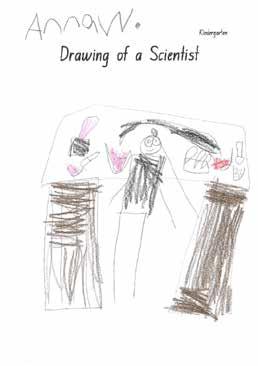
7 minute read
Spiral of inquiry – from research to practice
PREPARATORY SCHOOL
Spiral of inquiry – from research to practice
Towards the end of 2017, three Through the Research to Practice initiative, the Association of Independent Schools (AISNSW) gives teachers the opportunity to use high-impact techniques in classroom practice and be on the front foot with the new NSW Syllabus for the Australian curriculum: Science and Technology K-6. This grant facilitates a yearlong partnership between AISNSW and Primary school teams to transform the teaching and learning of Science and Technology through a framework called the Spiral of Inquiry. For more information, see https://www.aisnsw.edu.au/ EducationalResearch/Pages/ research-to-practiceinitiative.aspx
teachers from the Preparatory School – Miss Emily Boyd, Mrs Katie Barten and Miss Amanda Smith – successfully applied to take part in an AISNSW Research to Practice project with a specific focus on the teaching of Science and Technology within
the early years. The Spiral of Inquiry model is an inquiryorientated, evidence-based approach to teaching and learning. ”
Research tells us that many Primary teachers are not confident in their ability to teach Science and Technology. This project was designed to support teachers’ skills by examining ways that Science and Technology are taught in the Preparatory School and comparing this with literature outlining effective practices in the area. This project used a specific teacher-action research model called the Spiral of Inquiry. First developed by Dr Judy Halbert and Dr Linda Kaser, this model has proven to be very effective with positive outcomes for students.
The Spiral of Inquiry model is an inquiry-orientated, evidence-based approach to teaching and learning. It comprises six stages, and throughout the year, our team worked its way through these stages, examining current strengths and reflecting on how these correspond with best practice in the field. We used research to make changes to our practice where our analysis revealed gaps. We began the year with a fullday training session during which the model was outlined in detail. We were provided with a range of documents commissioned by AISNSW outlining effective practice in Science and Technology. We also had an opportunity to hear from a participant at another school, to help us understand the extent of the project, and its results. AISNSW consultant, Sue Pike, was then allocated to work with our team, helping us throughout the year as we navigated the stages of the Spiral of Inquiry.
SPIRAL OF INQUIRY
The first stage of the spiral required us to scan the current status of the area of interest with three key questions in mind: What is going on for our learners? How do we know? Why does this matter? Drawing upon the effective practices outlined in the research, we developed a range of tools to gather data to help us understand the current nature of Science and Technology teaching and compare this with research evidence. These tools included a survey for teachers, a survey for students, and, given that we were working with Preparatoryaged students, it also included
Preparatory School teachers’ professional learning meeting

SCIENCE AND TECHNOLOGY
an interview and student-drawn pictures of a scientist (see below). We also explored teacher programs and school documentation such as Scope and Sequences of our curriculum.
From the scanning phase we found that 61 per cent of students believed that scientists only work in professions involving laboratory coats and laboratory equipment. The majority of students also said that scientists are men. Our student survey showed that students felt our current Science lessons were teacher-led, and that not enough time was given to students to design their own experiments, or to reflect on and retest results. The teacher survey further demonstrated that a greater link needed to be made between Science programs and realworld problems, and that a stronger understanding of the Technology side of the syllabus was required. During the second phase – focusing – we triangulated the data looking for patterns and key trends. Some of the trends that we identified were that a new Scope and Sequence document was required and that we needed to change the way in which our units of learning were developed. We also found that there needed to be greater focus on scientific terminology and vocabulary used with students throughout a topic, and greater professional learning for teachers, particularly on the understanding of the processes of design and production and working scientifically.
After working our way through the Spiral of Inquiry phases, we now have greater capacity to use evidence-based research as a way of informing our practice and we can see how this model could be used in other key learning areas.”
The third stage of the spiral was developing a hunch. It required us to inquire more deeply into why there was a disparity between the research evidence and our current practice. Our hunches included:

Teacher knowledge of the syllabus and confidence with its content was limited due to minimum professional learning at this early stage.
The legacy of Science and
Technology meant it was considered a ‘speciality’ subject, rather than a core subject like
Numeracy and Literacy. These factors have had a major impact on the quality of Science teaching and learning within classrooms.
From this, we moved on to stage four of the inquiry process – professional learning. We were particularly fortunate that the NSW Education Standards Authority (NESA) had released its new Syllabus K-6 to assist with its familiarisation in readiness for implementation in 2019. This was an ideal opportunity to undertake relevant professional development. Professional learning in Science took numerous forms, including several workshops led by an AISNSW
Student drawings of their impressions of a scientist


PREPARATORY SCHOOL
Students actively exploring Science
The Spiral of Inquiry provides an evidenceinformed and disciplined approach to professional inquiry that is used to change outcomes for learners in a wide range of settings. It provides a ground-breaking framework focusing on changing the experience of learners through the development of new learning and new actions. Recent research suggests that the Spiral of Inquiry is one of the most impactful examples of professional learning in the world, consistently delivering demonstrable outcomes for learners.
(Jensen, Sonnemann, Roberts-Hull, & Hunter, 2016). consultant, involving all teachers from the Preparatory and Junior Schools. We worked closely in our regular team meetings to unpack the Syllabus in greater detail to understand its key intents and to consider its implications for programming and planning, as well as for classroom practice. Once we had engaged in some extensive professional learning, we then took action in a range of ways, including: creating a new K-2 Science and
Technology Scope and Sequence, which we presented to colleagues designing a new program template and creating a program checklist to guide teachers in their unit planning; we drew upon research about effective practice to create this checklist

writing the first 2019 units in preparation for the new Syllabus roll-out. After working our way through the Spiral of Inquiry phases, we now have greater capacity to use evidence-based research as a way of informing our practice and we can see how this model could be used in other key learning areas.”
Throughout this entire process we had the support of Sue Pike from AISNSW who met with us twice a term and acted as a mentor through the inquiry process. We are now eagerly awaiting implementation of the units and for opportunities to gather further data that will provide us with evidence to show if changes in teacher practice have resulted in improvement in student knowledge and skills in Science and Technology. After working our way through the Spiral of Inquiry phases, we now have greater capacity to use evidence-based research as a way of informing our practice and we can see how this model could be used in other key learning areas.
Acknowledgement
We gratefully acknowledge the support of the College and AISNSW in giving us the opportunity to take part in this project. We feel that we have professionally grown and can shine a light on our current practice. This initiative has transformed the way we work, strengthened our own capacity to teach Science and Technology, and we are now in a better position to support our colleagues as they implement the new Syllabus.










